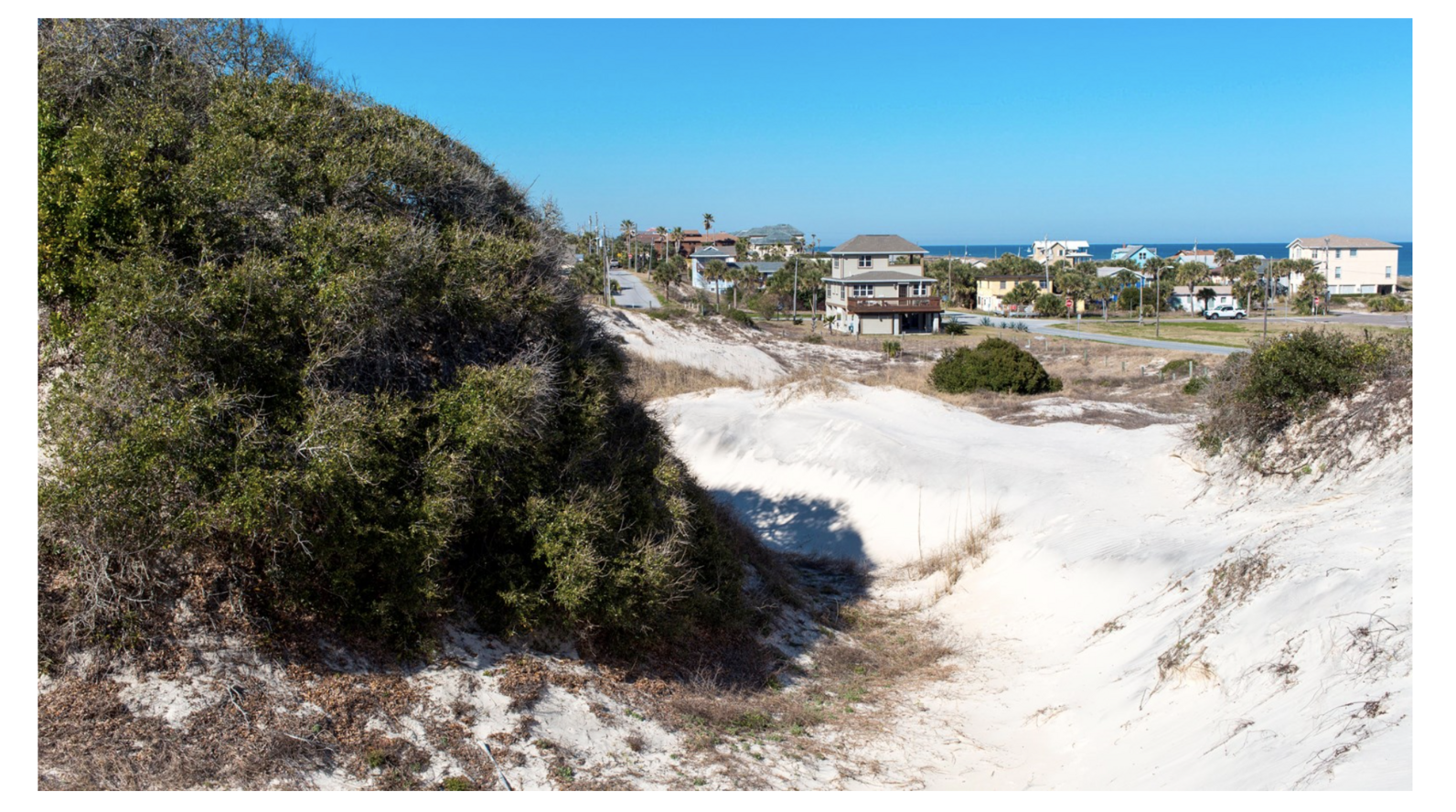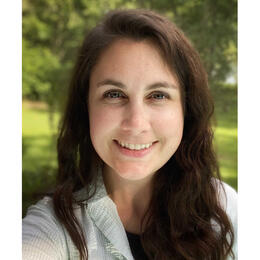“Getting the most from the least and living peacefully in harmony with nature is the most rewarding lifestyle.” ~ MaVynne Betsch
Reaching out across the undulating waves of a deep blue Atlantic Ocean, the NaNa Dunes cover more than eight acres; their tall, sandy forms are topped with sea oats and short, scrubby oaks. As the tallest dune system in Florida, they showcase an impressive example of the power of wind and plant roots in sculpting our coastal ecosystems, and they stand as a remarkable testament to the conservation efforts of MaVynne Betsch.
The Beach Lady
MaVynne Betsch, born in 1935, was nicknamed “The Beach Lady” for her relentless efforts to preserve American Beach in Northeast Florida. She descended from a long line of community leaders: her great-grandfather, A.L. Lewis, founded the Afro-American Life Insurance Company, becoming Florida’s first Black millionaire.
A classically trained musician, Betsch sang opera across Europe before permanently returning to American Beach, Florida, where she championed conservation and historical preservation. In an article for the Smithsonian, her friend Russ Rymer writes that when she returned from Europe, “[s]he jettisoned more than her diva status. She also gave away her significant inheritance, writing checks to conservation causes until the money ran out in the late 1970s, with the intangible compensation that a textbook on butterflies is dedicated to her and an Atlantic-traveling whale has been given her name (MaVynee #1151) by biologists at Boston’s New England Aquarium.”
She promoted the planting of trees and native wildflowers and was an avid wildlife lover, posting signs to alert locals and visitors to nesting sea turtles. Former Florida Senator Bill Nelson described Betsch as “a recognized leader in preserving land and history in the South.”

Protecting American Beach
Life under Jim Crow laws meant segregated beaches. Betsch’s great-grandfather invested part of his fortune to buy 200 acres to found American Beach in the 1930s so that Black families could come together and recreate along the Atlantic coastline.
As the American Beach Museum explains: “Over the next three decades, the American Beach resort became a sought-after destination for celebrities, local residents and visitors alike. African Americans traveled to American Beach from across the southeast. Especially during the weekends, their cars and buses lined the streets. The inns and hotels filled beyond capacity, and the beach became their oceanfront playground.”
After segregation legally ended, families could visit other parts of the coastline, lessening the draw of American Beach. Additionally, American Beach faced considerable development pressure as Florida’s population grew and beachfront properties increased in value. The initial 200 acres of American Beach diminished, replaced with new gated communities, golf courses, and more development.
Half eventually disappeared, though John-Thor Dahlburg noted for the Los Angeles Times in 2005 that: “Of American Beach’s lots and homes remaining in private hands, about 80% still belongs to blacks. But no more than a handful of homes belong to the families of the original buyers.”
To prevent the further development and sale of her beloved American Beach, Betsch became its biggest champion. She routinely led historical tours of the area and made plans for a museum.
When development of the Amelia Island Plantation threatened the NaNa dunes, so-named because “NaNa” means “grandmother” in the Twi language of West Africa, Betsch sprang into action. She convinced the resort to preserve the 60-foot dune system,.They eventually transferred the dunes to the National Park System in 2004, an extraordinary effort and success that required U.S. Congressional legislation.The dune system remainsprotected today as part of the Timucuan Ecological and Historic Preserve, offering critical habitat for a myriad of native wildlife and plant species.
Preserving and Communicating History
Betsch’s successes in historical preservation were equally impressive.
1992 - The Florida Legislature marked American Beach as a location on the Florida Black Heritage Trail.
2001 - American Beach became a site on the National Register of Historic Places.
2009 - A marker commemorating Betsch’s efforts in American Beach was erected by the Beach Property Owners Association and the Florida Department of State.
2014 - Nine years after her death but owing to her efforts, the A.L. Lewis Museum at American Beach opened its doors, with a mission to “document and interpret the rich tradition and legacy of African Americans’ ingenuity, perseverance and achievements. Through our exhibits and programs, we honor African Americans as agents of change in the development of African-American and American society.”
Into the Future
Current and future generations are inspired by Betsch’s vision, her commitment to the environment, and her legacy of protection in American Beach.
The museum is currently being renovated, and visitors to American Beach can look forward to an additional property open for visitation in the coming years. According to the National Park Service: “The "Evans Rendezvous" building [a popular meeting point on the beach]… was acquired by the Trust for Public Land. A project through the African American Civil Rights Grant Program, which works to document, interpret, and preserve the sites and stories related to the African American struggle to gain equal rights, is funding ongoing rehabilitation work at Evans’ Rendezvous.”
To learn more, visit: https://americanbeachmuseum.org/




